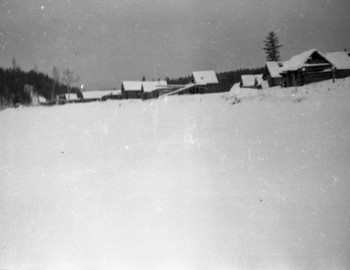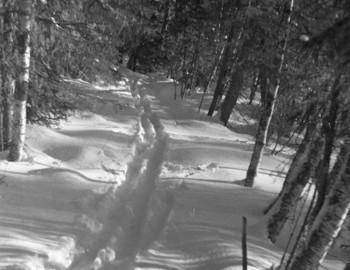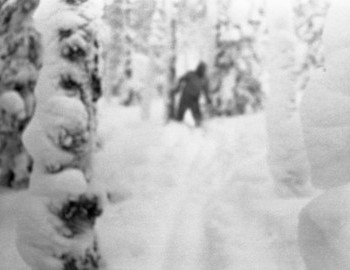.......................................
One thing that I feel is absolutely necessary before examining all of the theories is having a solid background on Western Civilization, particularly Soviet Russian history. There's no better way to approach this from the beginning of events than with an understanding of the times these people were living in and what they'd suffered through within living memory beforehand.
The event of the DPI is naturally explained by the disorders caused in the USSR by the liberations of the Gulag camps which took place from 1953 on the decisions of Beria and then Khrushchev.
https://en.wikipedia.org/wiki/De-Stalinizationhttps://en.wikipedia.org/wiki/History_of_the_Soviet_Union_(1953%E2%80%931964)
https://erenow.net/modern/gulagahistoryanneapplebaum/ (see in particular :Chapter 25: THAW-AND RELEASE)
In 1959 there remained in the vicinity of Ivdel and Vizhay a small proportion of ex-zeks or former political prisoners who had
many good reasons to hate the Soviet regime and who were ready
to continue their patriotic struggle.It is difficult to know if these were: Chechens, Ingush, Crimean Tatars, Poles, Czechoslovakians, Hungarians, Romanians, Moldovans, Ukrainians, Koreans, Germans, Bulgarians, Estonians, Lithuanians, Latvians... or from other countries.
Free workers (some of them were ex-zeks) from Settlement 41 or Vizhay or even from the entire surrounding region can be considered as very suspect (much more so than the Mansi).
The presence (or passage) of these 9 easy-going communists, visibly more or less Stalinist, was felt (by these ex-zeks) as an infamous propaganda and as an unsustainable provocation.
Loose}{Cannon» November 27, 2017, 07:23:17 PM; General Discussion > Unanswered Questions - Reply #16
« When it comes to foul play..... I don't trust those loggers they stayed with just days prior at the logging camp. » .........................................
In addition, it is certain that during the long period from the fateful night of February 1-2 and February 26 important evidence must have disappeared. Ski trails, and in particular ski trails left by mountain skis, would almost certainly have completely disappeared.
On top of the already serious difficulties mentioned above, there came orders from governmental authorities which dictated that the case be closed with the conclusion that the nine died as a result of a combination of accident by "a compelling natural force" and hypothermia.
............................................................
After the tragedy, the government decreed that common people were forbidden to enter the area for a period for three years. There is no rational reason why such a ban should be enforced if the official conclusions were correct. The natural terrain in that area is not particularly dangerous in any way either, so there could be no need to prevent people from entering for reasons of safety.
...........Nine people died. Their bodies were found. Dead people tell their own tale. We must simply re-analyze the available evidence as best we can, and start with the bodies. That is the best we can do.
«Ski trails, and in particular ski trails left by mountain skis, would almost certainly have completely disappeared. »Indeed the wind had indeed blown on the slope of Kholat Syakhl and on February 26, 1959 , with the exception of the famous footprints, which were photographed, there was not much left.
But the track in the forest near the Auspiya River which started from North 2 was certainly still visible on February 26th.
North 2 -->

Track -->

on the evening of January 31 by Thibeaux-Brigolle, who did not have time to focus.
Here is the result which is often misinterpreted nowadays.

For an average-level skier following the tracks of the 9 hikers, a few hours were enough to go from North 2 to the tent.
«The natural terrain in that area is not particularly dangerous.»Indeed the terrain is not dangerous for a team of 9 trained people, (apart from a few frostbite toes or ears......).
But
the KGB had failed in its mission by proving to be unable to protect the 9 hikers who were faultless Soviet citizens.
Thus, there could still be other die-hard enemies of the USSR (i.e. ex-zeks) in the region who had gone undetected (by the ineffective KGB) and who could have succeeded in another act of terrorism by killing additional Soviet hikers.
In other words, the region was not secured, as we say now.
The risk of a second attack in the region could not be envisaged by the Soviet leadership, especially considering that in 1959 Khrushchev feared being deposed by Brezhnev (which happened in 1964).
« Dead people tell their own tale. »These 9 dead people tell us that blunt objects = clubs = bludgeons = pieces of birch branch (110 cm, 4 kg) are more effective than bare fists to defeat and kill. (I am obviously influenced and convinced first by Eduard Tumanov and then by Per Inge Oestmoen).
«That is the best we can do. » We can do more.We can and must use reason
to complete the missing parts. That is, imagine scenarios:
1) - capable of
explaining all the clues that are collected on Dyatlovpass.com
2) - which take into account the history of the USSR, particularly the liberation of the camps during the destanilisation of the Khrushchev's thaw.
Without achieving absolute certitude, which is often the case in history as well as in judicial investigations,
we will end in some probable reconstructions.It is when we have drawn up complete descriptions, capable of explaining everything, that we will be able to search for and estimate the value of the available clues. Obviously the clues we know are debatable; they are not irrefutable evidence because, otherwise, there would be no problem, (and therefore the Dyatlovpass.com website would not exist !).
An example of a tenuous and debatable clue. See :
«Lyudmila Dubinina's premonition of her tragic death» (Sabine Lechtenfeld)
https://forum.dyatlovpass.com/index.php?topic=433.0 Here
no «premonition», but thanks to her enhanced feminine intuition, Dubinina had correctly
guessed or perceived that, behind some polished or smiling faces, (at Vizhay or at settlement 41) there was
a deep-seated hostility.January 24... Yes, and I generally like to add oil to the fire, damn me to hell.
January 25... The mood sank. In general, I am very, very sad.
January 26... Mood is bad and probably will be for two more days. Evil as hell.